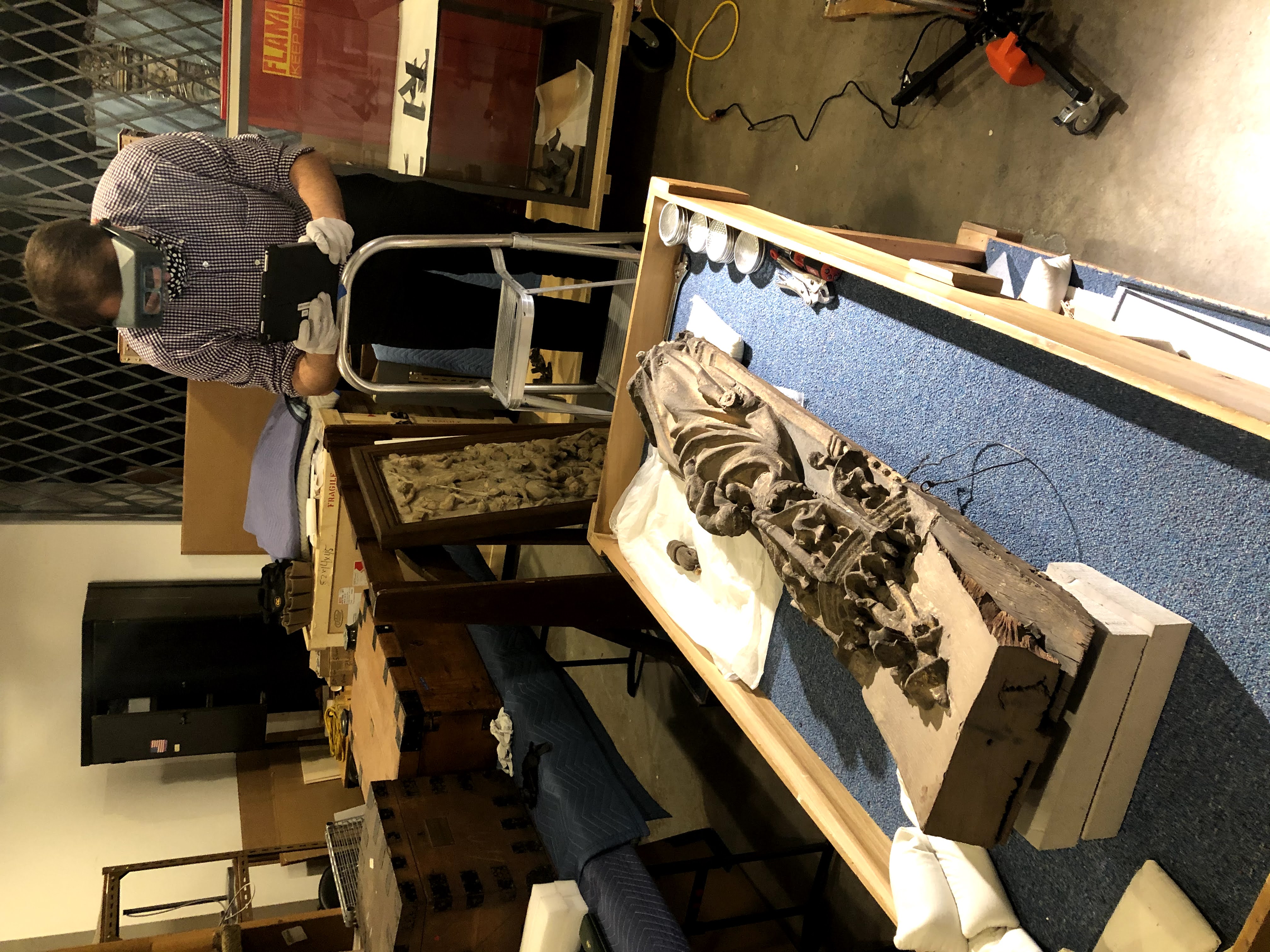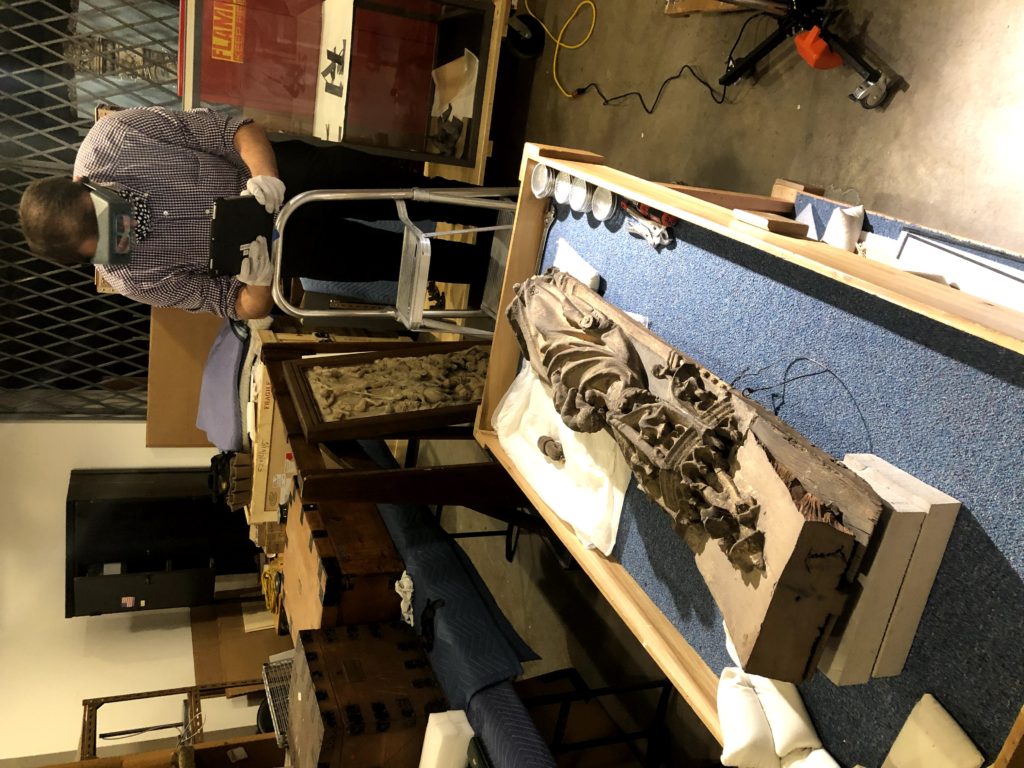A Letter from Toledo, Ohio

Much like other emerging professionals in and from graduate school, I also found myself left with a lot of questions regarding experiences that at one point had been on the horizon. Even before the dawn of the COVID-era, I was having difficulty locking up something that would have fallen in line with my Master’s curriculum at the School of Information. I am happy to report, however, that since the last full week of June I have been working as an Intern in the Registrar’s Office at the Toledo Museum of Art.
The staff at the Toledo Museum of Art immediately involved me with various projects. The first project had an imminent deadline and involved relocating dozens of works of art (primarily sculpture) to a new housing location in a vault installed in the Museum in 1912. This required close collaboration with members of the Conservation staff while taking inventory and condition reports of the sculptures. Works ranged from bronzes created by Paul Manship and marbles from Rodin, to wooden wall-mounted sculptures from 15th Century Europe and processional crosses from Ethiopia. The first steps of this project required me to plan on graph paper the arrangement of these objects in their new housing units to scale, and also to make decisions regarding the height of the new shelves. Once this was completed, different materials were identified by conservation as appropriate to prepare said housing units for storing objects, a process which I helped complete. Once this was all set in motion, I coordinated with Assistant Registrar Caitlin Jewell, and Preparators to observe the physical relocation of these works.
After the conclusion of moving works back into the Vault, I quickly shifted to focusing a good deal of my time on an 808-piece set of Tiffany Silverware, the design of which is “Flemish” first introduced in 1911. The silverware is currently housed in its original chest of drawers, which has proved to be detrimental to the condition of the silverware itself. In another collaborative effort with conservation staff, materials were identified in order to create adequate housing solutions for these pieces. This required my investigation of the document files regarding the provenance of this set, as well as a full inventory of the chest and measurement of the pieces. At the time of the writing of this letter, the project is still underway. Housing prototypes are just being finished, and full-scale rehousing should begin after each piece is dipped in a solution to clean them. The idea is not only to better the condition of these works, but also open up opportunities for their use in various ways in the future.
I have also been chipping away at larger, digital tasks that have arisen in the Registrar’s Office at the Museum. One of the most expansive collections of a single type of work here at TMA is netsuke, small ornaments that are used as part of traditional Japanese dress. The Museum recently acquired a bequest of over 300 individual netsuke works. As they only arrived at the Museum about a week ago, we have only recently begun inventorying them physically. I have been tasked with creating individual records for each of the 300+ netsuke in the Museum’s database. With 180 currently complete, I hope to finish the other 120+ soon.
Outside of these typical registrar duties, I have found myself experiencing the commonly discussed ‘wearing of many hats’ that occurs in cultural heritage institutions. Over the past few weeks I have been assisting Andrea Gardner, Director of Collections, with assembling information regarding highlights of exhibit artifacts from the Ancient Near East and Egypt for a docent training to take place in early September. I also helped assemble examples of Codes of Ethics for the creation and editing of TMA’s own Code of Ethics, Collections Management Policy, and Code of Conduct. These two different projects have revealed to me the duties that various individuals in an institution can carry outside of what is in their job description.
Taking this point further, I have also voluntarily participated in the current strategic planning meetings being held by Adam Levine, the Museum Director. Each of these sessions are held with a variety of staff from all departments, and pose questions to attendees such as “describe TMA in a single word or phrase” and “if you had unlimited resources, what would you do at TMA?” Initially feeling as though someone with (at the time) one month of experience working here, I did not feel as though it was my place to provide input or guidance as to where this Museum heads in the next five to ten years. I was, however, encouraged that my limited exposure is all the more reason to provide input. This moment of doubt has shown me that sometimes organizations need these limited observations and more direct feedback in order to understand and see characteristics of itself it may otherwise ignore.
Other duties at TMA that I have been exposed to but have not directly contributed to were the condition reporting for the closing of the recent exhibition Mirror Mirror: The Prints of Alison Saar, and consistently listening in on meetings with curatorial staff on potential upcoming loans. Both of these opportunities of observation have revealed to me the inner workings of art galleries/museums specifically.
I could not be more grateful for having this door opened for me in a time of such uncertainty and discouragement. I was originally slated to begin at TMA in mid-May, but that was quickly suspended at the outbreak of COVID-19 in the United States. There were times when I was uncertain on whether or not I would be able to complete this opportunity in person, if at all. Luckily, TMA has taken very careful steps to re-open, and has done so in phases and with strict requirements. If it were not for this planning and cooperation on all fronts by TMA staff, I am not sure that I would have been able to participate in these wonderful experiences to such an extent.
I will be forever thankful to the Toledo Museum of Art, and the University of Michigan Museum Studies Program for giving me this opportunity in a time where these entry level experiences had been cancelled and put on hold for a variety of reasons related to the pandemic. It has truly shown me many intersections between my Masters coursework, museum theory and practice, and collections management duties as described in the classroom and executed in the ‘real world.’




